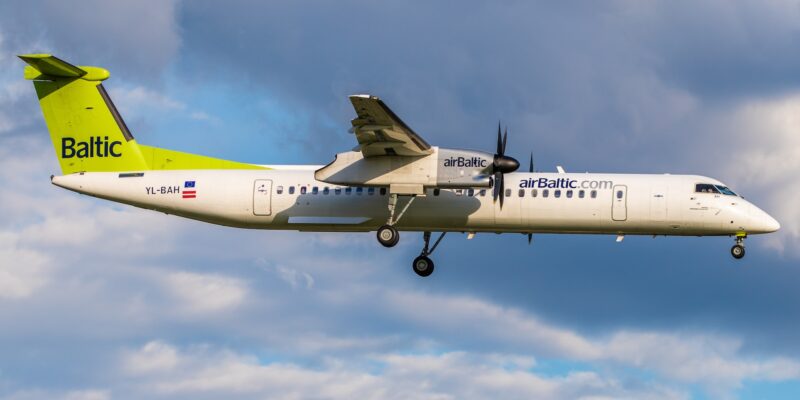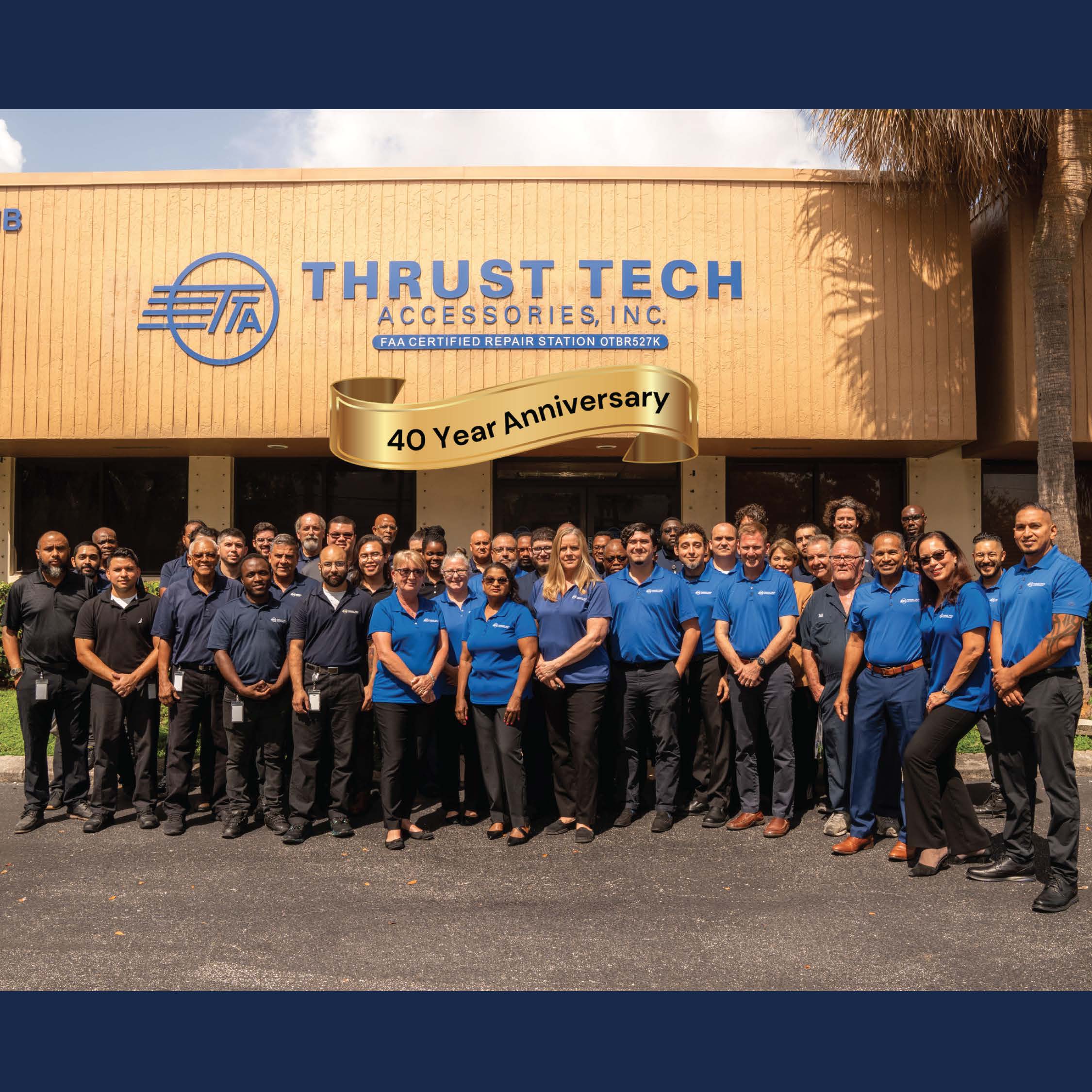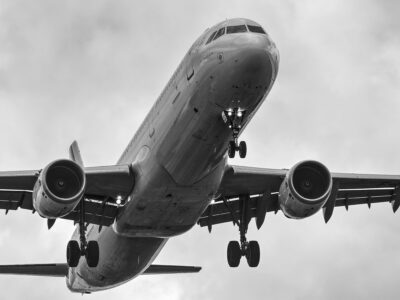
TTA’s Tour of the World of Aircraft
In this ongoing series, Thrust Tech Accessories (TTA) shines a light on the many different aircraft types presently in service around the world. Join us as we explore the roles they play in the industries they serve and the challenges they may see in performing their important duties day-by-day, year-after-year, all across the globe.
We also wish to underscore the key role that MROs like TTA play behind-the-scenes in providing overhaul, repair, and modification of engines and airframe accessory components that keep such aircraft flying properly, safely – and long into the future.
PHOTO CREDIT: Kevin Hacketert
* * * * * * * * * * * * * * *
Dash-8 400 Embodies De Havilland’s Rich Aviation Traditions
Nearly a century ago, the De Havilland Aircraft Company of England incorporated a subsidiary business on “the other side of the pond,” the west side that is. With that austere beginning in Canada on March 5, 1928, the upstart De Havilland Canada grew into a highly accomplished, globally recognized aircraft designer and manufacturer.
The firm’s history has had some twists and turns along the way, though. In the 1980s, the government of Canada privatized the company, selling it to Boeing. It was then acquired by Bombardier Aerospace in 1992. A new era began in 2006, when Canada-based Viking Air bought the type certificates for De Havilland’s original, out-of-production designs, and in 2018, Longview Aviation Capital, Viking Air’s holding company, bought the Q400 program, and rights to the De Havilland name and trademark. Presto, in June 2019, the entire De Havilland product line came under the umbrella of a new holding company – De Havilland Aircraft of Canada Limited.
What storied aircraft really built De Havilland’s reputation? In the early years, the company manufactured an all-metal trainer, the DHC-1 Chipmunk, for the Royal Canadian Air Force. Over the years, De Havilland also became well known for its DHC-2 Beaver bush plane. That aircraft could take off and land almost anywhere – helping connect Canada’s most remote northern communities. De Havilland also built the “one-ton truck of the skies,” the DHC-3 Otter, as well as the DHC-4 Caribou purchased by the U.S. Army, and a larger DHC-5 Buffalo, designed for use on U.S. Army special missions. Then, of course, there was the DHC-6 Twin Otter, a catalyst for North American regional aviation, as well as the DHC-7 Dash 7.
“When many people think of De Havilland, though, they most often focus on what’s operating now, the DHC-8 Dash-8 400,” says Stanley Kowlessar, general manager, Thrust Tech Accessories (TTA), an FAA 145 and EASA Certified repair station provider of MRO services in Fort Lauderdale, FL. “This economical turboprop – which first took flight in the 1980s and has been updated over the years – offers jet-like performance. It’s able to execute steep approaches, operate at high altitudes, and handle unpaved, narrow runways.”
TTA Services Available
Typical maintenance, repair and/or overhaul services provided by TTA for customers operating De Havilland airframes include:
- Electric driven pump and motor packages
- Generators
- Hydraulic pumps
- Ignition exciters
- Starters
- Pneumatics and more
Along with our ability to analyze customer quotes as an average and monitor cost drivers to explore better cost savings options developed internally for our customers.
In response to competitive pressures by the ATR-72 and other aircraft with 70+ seats, in 1998, a stretched design Dash-8 400 was unveiled. That was also called the Q400 in a rebranding effort by De Havilland’s former owner Bombardier to showcase the aircraft as a “quiet plane.” That aircraft meets U.S. Federal Aviation Administration (FAA) Stage 5 standards and is certified by EASA for ICAO Chapter 14 standards.
While some regional airlines have recently retired their fleets of Dash-8 400s (Q400s), De Havilland reports that the aircraft are operated by more than 75 owners and operators. Among them are Qantas, WestJet, and Porter Airlines.
Aerial Firefighter Duty
Dash-8 400s also have new roles as aerial firefighter aircraft. In fact, U.S. aerial firefighting specialist Aero-Flite has just been cleared to conduct De Havilland Dash 8-400 tanker operations. According to Flight Global Online (May 6, 2023), the FAA has granted a supplemental type certificate to the Dash 8-400AT variant, through which the turboprop has been modified for fire attack. Two of the aircraft will be operated under a contract with Washington state.
Freighter Versions Available
In July 2022, De Havilland unveiled the Dash 8-400 “Quick Change” model – which can flexibly switch from passenger seating to carriage of air freight packages, or vice versa. Operators can thus tap into two different income streams.
Also, the aircraft can be fully transformed into a Dash 8-400 F-LCD, a freighter with a large cargo door. For example, in early 2023, De Havilland announced that Aero Transporte S.A. (ATSA) had signed a firm agreement for a Dash 8-400 freighter conversion with a large cargo door. So, ATSA’s Dash 8-400 F-LCD aircraft will be the first one operating in South America. To support the mining sector, ATSA currently operates two Dash 8-400 aircraft from its base in Peru.
Overall, “the benefits of the Dash-8 400 include superb accessibility to airfields, a range of up to 1,640 nautical miles, long structural life, low-noise and low CO2 emissions and more,” says Kowlessar, who adds that TTA’s customers often turn to his experienced MRO services company for parts and MRO solutions for their Dash-8 400 or Q400 airframes.
Growth on the Horizon
The Dash-8 400 (Q400) certainly embodies De Havilland’s rich aviation traditions. And growth is on the horizon. In September 2022, De Havilland confirmed in a press release that it will build a new aircraft manufacturing facility called De Havilland Field in Wheatland County, Alberta, approximately 30 minutes east of Calgary. Construction will begin as soon as late 2023.
Most notable? De Havilland’s press release said, “We are currently working towards bringing the DHC-6 Twin Otter and Dash 8 400 aircraft back into production.” Yet, as De Havilland moves to the next chapter, some of TTA’s customers are continuing to operate older Dash-8 400s.
“Our skilled technicians and other MRO experts work daily with customers to secure parts and offer solutions that are both cost-effective and time-sensitive,” says Kowlessar. “Together, we can keep these workhorse turboprop aircraft flying reliably and safely for many years to come.”






